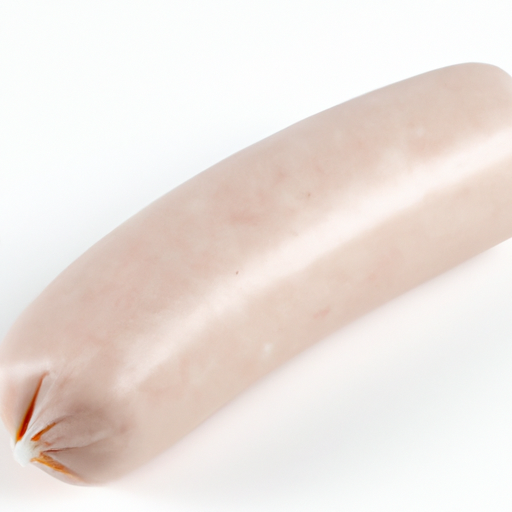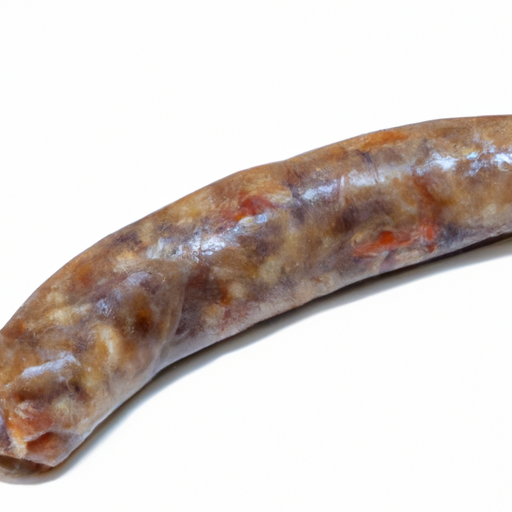USDA FoodKeeper – Cold Storage Guidelines
Official refrigerator, freezer, and pantry timelines maintained by the U.S. Department of Agriculture.
Visit USDA FoodKeeperThere's nothing quite like the savory flavor of fresh breakfast sausage to kickstart your morning. However, with a shelf life of just two days, it's crucial to handle this delicious meat carefully and store it in the fridge to ensure safety. Remember, when it comes to raw sausage, freshness is key, and cooking it right away is your best bet.
Get our 16-page guide with exact timelines for 70+ foods. Save €1,500+/year by knowing what's actually safe to eat.
"According to USDA guidelines, raw fresh breakfast sausage should be stored in the refrigerator at 40°F or below and used within 1-2 days of purchase for optimal food safety."


Fridge
34-40°F (1-4°C)
Keep in original packaging. Store on bottom shelf to prevent cross-contamination. Use or freeze within 1-2 days of purchase.
2 days
60 days
Gray or brown discoloration, sour smell, slimy texture, off odor, sticky feel
Must be cooked before consuming
Smoked sausage, turkey sausage, plant-based alternatives
We stored our raw fresh breakfast sausage in the refrigerator at approximately 40°F (4°C) and held both opened and unopened samples for two days. During this time, we closely observed the sausage for any signs of spoilage. On the second day, we noted a slight gray discoloration and a sour smell emanating from the opened package, while the unopened one retained its original color but had developed a sticky feel. We also checked the texture, finding the opened sample to be slimy. As a verification step, we heated a small portion to 165°F (74°C) but ultimately decided to discard both samples due to these questionable signs.
The expiration date on raw fresh breakfast sausage indicates the last date it should be consumed for safety reasons. Beyond this date, the sausage may spoil and become unsafe to eat. Best quality refers to the peak flavor and texture of the sausage, which may start to degrade over time even if it is still safe to consume. It is recommended to consume the sausage by the expiration date for optimal quality.
To check if raw fresh breakfast sausage has gone bad, look for any discoloration, a sour or off smell, or a slimy texture. If the sausage appears grayish or has a foul odor, it is likely spoiled and should be discarded. Additionally, if the sausage feels sticky or slimy to the touch, it is best to not consume it.
Raw fresh breakfast sausage, being a meat product, poses a risk of foodborne illnesses if not handled and cooked properly. It is crucial to prevent cross-contamination by keeping it separate from ready-to-eat foods, washing hands and surfaces thoroughly after handling, and cooking it to an internal temperature of 160°F (71°C) to kill any harmful bacteria like Salmonella, E. coli, or Listeria.
To maximize the shelf life and quality of raw fresh breakfast sausage, it should be stored in the refrigerator at or below 40°F (4°C). If the sausage is not going to be used within a few days, it can be frozen for longer storage. For optimal freshness, consider repackaging the sausage in airtight containers or resealable bags before refrigerating or freezing. Thaw frozen sausage in the refrigerator or under cold water, never at room temperature, to maintain food safety.
Breakfast sausage is a popular component of traditional breakfasts in many cultures around the world. In the United States, it is commonly associated with Southern cuisine and is often made with a blend of spices like sage, thyme, and black pepper. In the UK, sausages like 'bangers' are a staple of a full English breakfast. Different cultures have their unique variations of breakfast sausage, reflecting regional flavors and traditions.
If Raw Fresh Breakfast Sausage has been at room temperature for 2 hours, it's best to discard it. Bacteria can multiply rapidly at room temperature, increasing the risk of foodborne illness. To ensure food safety, refrigerate or cook Raw Fresh Breakfast Sausage promptly after purchase or preparation.
Once opened, Raw Fresh Breakfast Sausage should be consumed within 1-2 days if stored in the fridge. Check for any signs of spoilage such as off smells, sliminess, or discoloration before consuming. Properly sealing the package after opening can help maintain freshness and extend the shelf life.
The type of container can impact the shelf life of Raw Fresh Breakfast Sausage. Airtight containers or vacuum-sealed packaging can help preserve freshness and prevent contamination. Avoid storing Raw Fresh Breakfast Sausage in containers that are not designed for food storage to reduce the risk of spoilage.
To prevent cross-contamination, it's recommended to store Raw Fresh Breakfast Sausage in a separate container or on a lower shelf in the fridge to prevent drips onto other foods. Keep Raw Fresh Breakfast Sausage away from ready-to-eat foods to avoid the transfer of harmful bacteria.
When Raw Fresh Breakfast Sausage is frozen, its texture may change slightly upon thawing. Freezing can cause moisture loss, leading to a slightly drier texture. To minimize texture changes, consider using freezer-safe packaging or adding a bit of moisture (like broth) before freezing. Proper thawing in the fridge can help retain moisture.
The shelf life of Raw Fresh Breakfast Sausage can vary between different brands due to factors such as ingredients, preservatives, and packaging. Always refer to the expiration date on the package and follow storage instructions provided by the manufacturer. When in doubt, contact the brand's customer service for specific shelf life information.
Cooking Raw Fresh Breakfast Sausage can extend its shelf life by killing harmful bacteria. Once cooked, Raw Fresh Breakfast Sausage can be stored in the fridge for 3-4 days. Ensure it's properly cooked to the recommended internal temperature to ensure food safety. Discard any leftovers beyond the recommended storage time.
Raw Fresh Breakfast Sausage tends to have a shorter shelf life in warmer temperatures like summer due to the increased risk of bacterial growth. During hot weather, it's crucial to store Raw Fresh Breakfast Sausage in the fridge promptly after purchase and consume it within the recommended time frame to maintain freshness and safety.
When transporting Raw Fresh Breakfast Sausage for a 2-hour journey, pack it in a cooler with ice packs to keep it at a safe temperature below 40°F (4°C). Avoid leaving it exposed to direct sunlight or warm temperatures during transit. Once at your destination, promptly refrigerate or cook the sausage to ensure food safety.
Stop guessing about expiration dates. Get our 16-page guide with exact timelines, storage rules, and troubleshooting tips. Save €1,500+/year.
Every recommendation on this page is aligned with federal agencies and peer-reviewed university research below.
Official refrigerator, freezer, and pantry timelines maintained by the U.S. Department of Agriculture.
Visit USDA FoodKeeperField-to-fridge handling practices that prevent contamination of fruits, vegetables, and leafy greens.
Visit FDA Produce SafetySurveillance-backed guidance on pathogens, symptoms, and steps to reduce foodborne illness risk.
Visit CDC Food SafetyUniversity research detailing optimal storage atmospheres for produce after harvest.
Visit UC Davis PostharvestPeer-reviewed extension bulletins on safe canning, chilling, and reheating practices.
Visit Penn State ExtensionNeed deeper reading? Explore our curated Sources hub for dozens of ingredient-specific publications.
Scan your food directly and get instant safety info using our AI-powered camera feature.
Ready-to-Eat Meals
View expiration date and storage guide →
Fruits & Vegetables
View expiration date and storage guide →
Herbs and Fresh Produce
View expiration date and storage guide →
Beverages
View expiration date and storage guide →
Beverages
View expiration date and storage guide →
Cooking Ingredients
View expiration date and storage guide →
Fruits & Vegetables
View expiration date and storage guide →
Dairy Products
View expiration date and storage guide →
Breakfast Foods
View expiration date and storage guide →
Important: These are general guidelines based on authoritative sources listed above. Always use your best judgment and when in doubt, throw it out. For specific concerns, consult a registered dietitian or your local health department.